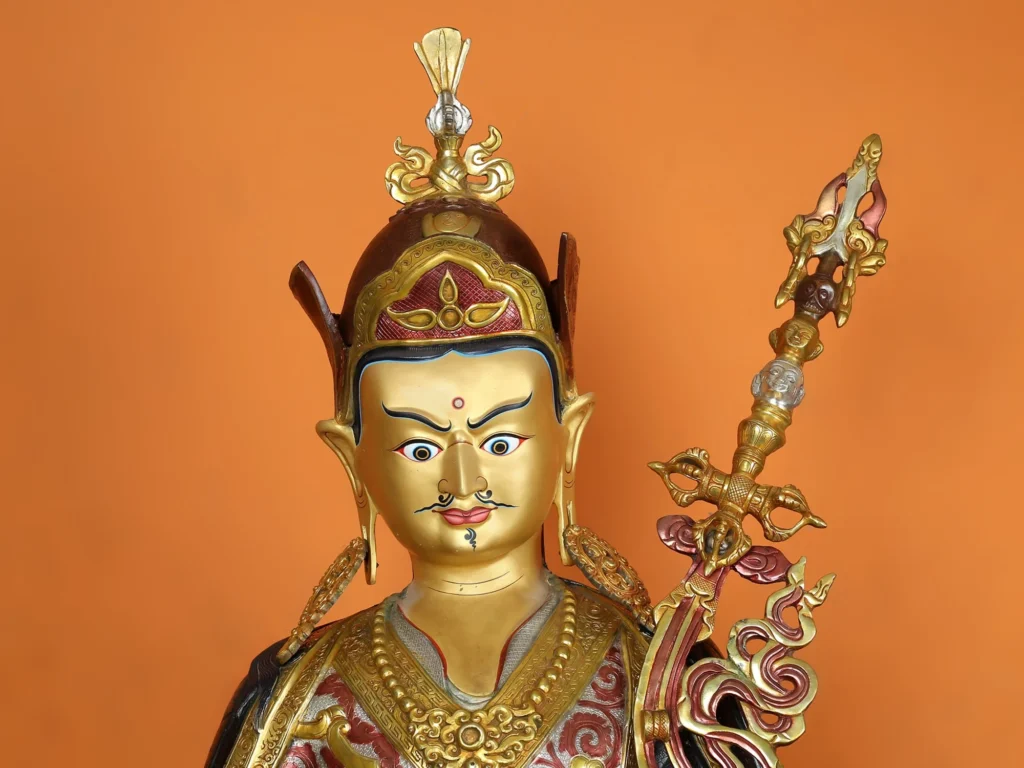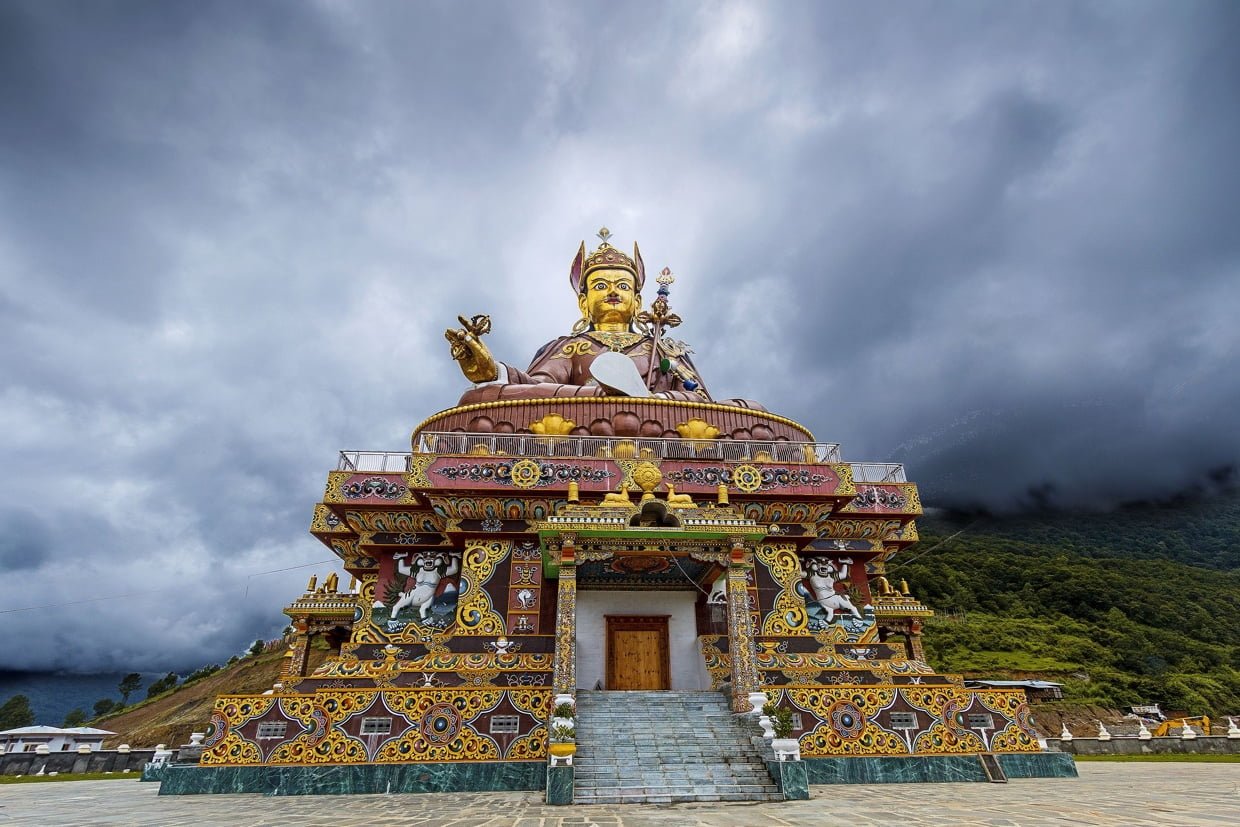The Nyingma School, rooted in ancient Buddhist traditions, stands as a testament to the spiritual depth and historical richness of Tibetan Buddhism. Founded on the translations of Indian Buddhist texts by Berozana, this school is a treasure trove of tantric teachings, known as Sangngak Nyingma, intertwined with local customs and deities. Let’s dive into the essence of Nyingma, its unique practices, and the revered monasteries that form the backbone of this tradition.
The Essence of Nyingma Tradition
Dating back to the 8th century, the Nyingma tradition is distinguished by its adherence to the teachings passed down from the legendary Indian guru, Padmasambhava, often celebrated as the founder of Tibetan Buddhism. This tradition marries the profound teachings of tantra with local religious practices, incorporating elements shared with the Bon tradition, such as shamanistic rituals.
At its core, the Nyingma School emphasizes the practice of guru yoga, a discipline fostering a reciprocal relationship between student and teacher. This approach to spiritual practice highlights the importance of direct transmission of wisdom and the transformative power of guidance from enlightened masters.
A Focus on Practice Over Philosophy
Initially, the Nyingma tradition placed less emphasis on the study of logic and philosophy, choosing instead to concentrate on the experiential dimensions of Tantra. This practical focus underscores the tradition’s commitment to spiritual realization and the cultivation of profound inner experiences.

The Six Mother Monasteries: Pillars of the Nyingma Lineage
The Nyingma lineage is anchored by “six mother monasteries,” each a hub for spiritual practice, learning, and community. These monasteries are not only centers of devotion but also of cultural preservation and scholarship:
- Mindrolling Monastery: A beacon of learning and practice, known for its emphasis on the Dzogchen teachings.
- Katok Monastery: Famed for its rigorous adherence to traditional practices and its role in preserving the purity of teachings.
- Dorje Drak: Renowned for its dedication to the continuation of the Nyingma tradition and its rich historical legacy.
- Dzogchen Monastery: A center for the study of the Great Perfection, offering insights into the ultimate nature of reality.
- Palyul: Celebrated for its dedication to the study of Buddhist scriptures and tantric practices.
- Shechen Monastery: Known for its vibrant community and contribution to the arts, philosophy, and meditation practices.
Additionally, Samye Monastery, the first in Tibet established by Padmasambhava and Śāntarakṣita, plays a crucial role in the history of Tibetan Buddhism, initially under Nyingma and later influenced by the Sakya tradition.
Embracing Change and Tradition
Over the centuries, the Nyingma School has seen significant reforms, evolving to meet the spiritual needs of its followers while maintaining its foundational teachings. This balance between tradition and adaptation has ensured the continuity and relevance of the Nyingma teachings in the modern world.

The Hidden Treasures of Dzogchen Nyingma: Exploring the Terma Tradition
The Nyingma tradition, one of the oldest schools of Tibetan Buddhism, holds a profound and mystical aspect of spirituality known as the Terma tradition. Within the Nyingma’s extensive teachings, categorized into Nine Yanas (vehicles), Dzogchen stands out as the pinnacle of spiritual practice. However, it’s the concept of Terma, or “hidden treasures,” that adds a layer of mystery and wonder to this tradition.
Unveiling the Terma Tradition of Nyingma
Terma are sacred texts or objects that were concealed by great masters, primarily Padmasambhava (Guru Rinpoche), and his closest disciples, to safeguard Buddhism during times of decline. These treasures, destined to be discovered by Tertons (treasure revealers) at precisely auspicious moments, were hidden across the landscape in rocks, caves, and other secret places. This ensured that the teachings would emerge when most needed, providing guidance and enlightenment to future generations.
Interestingly, Terma can also be “mind terma,” treasures that do not require physical unearthing but appear directly within the mindstream of a Terton. This direct transmission highlights the esoteric and deeply personal aspect of the Terma tradition.
The Guardians of Buddhism
The act of hiding these treasures was a strategic move to protect the Dharma during the oppressive reign of King Lang Darma, who sought to diminish Buddhism’s influence. By secreting away these texts, ritual objects, and relics, Padmasambhava and his disciples ensured that the essence of Buddhism would survive through the ages, ready to inspire when the world was once again receptive.
The Legacy of the Tertons
The discovery of Termas led to the establishment of special Terma lineages throughout Tibet, particularly within the Nyingma school. This gave rise to two distinct methods of Dharma transmission: the “long” oral transmission from teacher to student through unbroken lineages and the “short” transmission of Terma. Among the most famous Tertons were the Five Terton Kings and the Eight Lingpas, revered figures who played a crucial role in revitalizing Buddhism with the treasures they uncovered.
Historical Roots in Indian Buddhism
The practice of revealing hidden teachings is not unique to Tibetan Buddhism. In India, Nagarjuna, a revered Buddhist philosopher, is said to have rediscovered part of the “Prajnaparamita-Sutra in one hundred thousand verses” in the naga realm, safeguarded since the time of Buddha Shakyamuni. This historical precedent underscores the timeless and universal appeal of discovering ancient wisdom to illuminate the path of spiritual practice.
In Conclusion
The Terma tradition within the Dzogchen Nyingma school is a fascinating blend of mystery, historical strategy, and spiritual depth. It represents a unique aspect of Tibetan Buddhism’s adaptability and resilience, ensuring that the teachings remain alive and accessible across centuries. Through the dedicated efforts of Tertons and the enduring wisdom of the Terma, the Nyingma tradition continues to offer a path to enlightenment that is as relevant today as it was a millennium ago.











